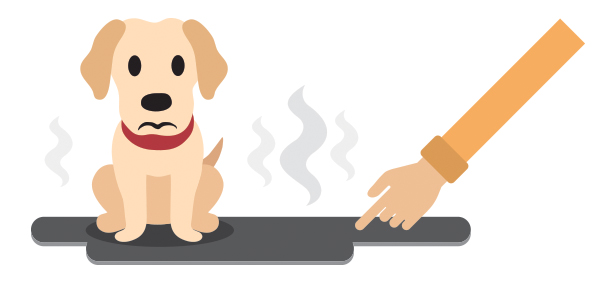
BY BRIAN D. SMITH
It’s a day made for the outdoors, with temperatures in the mid-70s and a balmy breeze stirring the humid Indiana air. Even your 10-year-old bulldog Max seems invigorated, bolting into your fenced backyard when you open the door.
But when you check on him a half hour later, Max looks anything but energetic. Flat on his stomach, tongue dangling, he doesn’t even move when you call his name.
Could your beloved companion’s life be in danger?
Indeed it could, says Dr. Jessica Leto, a veterinarian with Angel Animal Hospital in Greenwood. “Heatstroke can occur within 10 minutes of being in a hot, humid, poorly ventilated environment,” she says. “But people don’t realize that it can also occur when humidity alone is high and the temperature is only in the 70s.”
Excessive panting and bright red (sometimes bluish) gums are reliable indicators of overheating. Your pooch may also act lethargic or unresponsive to commands – or, worse yet, experience convulsions, vomiting or diarrhea.
A healthy dog’s (and cat’s) temperature is between 99 to 102.5 degrees, Leto says, and at 103 it’s considered hypothermic (elevated). Heatstroke begins when the core body temperature reaches 105 degrees and continues to rise; if untreated, it can lead to multi-organ failure, a seizure and/or coma, and eventually, death.
What to do if your dog appears overheated? Don’t burn rubber to the vet’s office before you’ve taken a crucial first step. ”The best thing owners can do is start cooling measures as soon as possible before or while on the way to the veterinarian,” Leto says. “If you do nothing during those minutes, it could be a matter of life or death.”
Wrap your furry friend in towels saturated with lukewarm water. Don’t use ice or cold water, which can constrict blood vessels and keep excessive body heat trapped inside, says Thomas Dock, director of communications for the 11 Noah’s Animal Hospitals in central Indiana.
Of course, hot weather poses additional hazards for dogs, so keep these tips in mind:
Never leave an animal in a parked car, even for a few minutes with the windows cracked. On an 80-degree day, the temperature can reach 99 degrees in 10 minutes.
Hairless, short-haired and light-colored pets can get sunburned. But use dog sunscreen, not human sunscreen, which may contain toxic zinc oxide, Dock notes.
If you allow your pet outside, make sure there’s plenty of shade and cold water available. A doghouse may not be cool enough; Leto suggests a dog cooling mat or vest and even a kiddie pool for quick cooldowns.
Don’t walk your dog in the heat of the day – try mornings and evenings. To avoid scorching your pet’s footpads, put your hand on the pavement or asphalt for several seconds. If it’s too hot for you, it’s too hot for Fido.
BRIAN D. SMITH is a freelance journalist from Greenwood.



